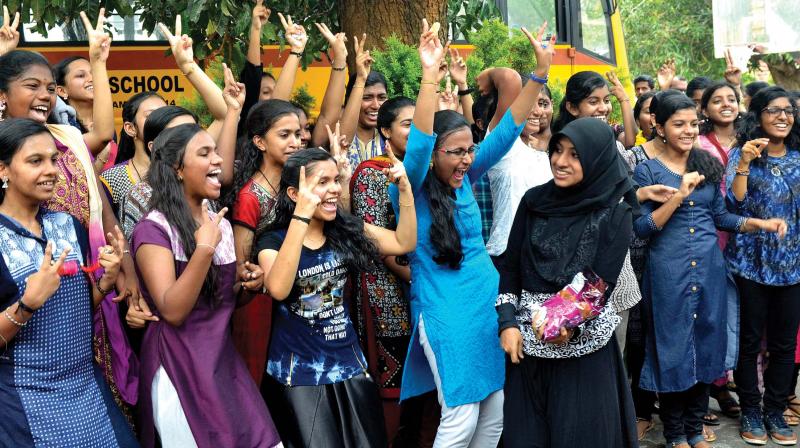SSLC results, Are they predetermined?
However, the atmosphere of jubilation has its own hidden black holes of mystery.

Kerala SSLC examination results have been declared with the usual fanfare. There is a ‘realistic twist’ in this year’s results as 2.5% of the students are declared as failed. While the pass percentage of 97.5 is more convincing than the legendary 100% of the previous years, the present outcome of the class X examinations does not instill a sense of pride and optimism. Of course it is a matter of immense satisfaction to all the stakeholders that the pass percentage is liberal enough to encompass almost every student. However, the atmosphere of jubilation has its own hidden black holes of mystery. The dynamics of accomplishing a pass percentage of 97.5 and the direct or indirect role of extraneous actors other than the examiners and the examination board begs for more transparency and accountability.
It should be clear to the public whether the pass percentage is predetermined or truly reflects the attainment of the students. Admittedly valuation of answer sheets cannot be open to public scrutiny nor can it be accessed through the instrument of RTI Act. But every citizen has a right to know the norms followed in evaluating the answer sheets. As the question papers are in public domain (after the examination), there is no justification in keeping the guidelines for valuation under wraps. How the examination board arrives at a decision on granting ‘moderation’ that morphs the final result is also a matter of curiosity and concern.
Of course every parent and every school is happy with liberal valuation.
However, it only means that the examiner has been asked to overlook inadequacies in the answers, disregard the mistakes and liberally award marks for what little right elements could be discovered. It, in effect, means that the student has been rewarded disproportionately to his knowledge as revealed in the answers. After such liberal bouts of marks, there is the official level ‘adjustments’ that spikes the result to a (presumably) predetermined percentage, which makes the whole affair morally murky. The whole process compromises on principles of morality and credibility. It could be argued that here the tradeoff is between social equity and examination orthodoxy. But that conceals the truth that the knowledge base of a student has no bearing on the duly certified grade. That is where credibility of the certificate begins to erode.
The certificate issued under the seal and emblem of the State examination board should mean what it certifies. Nothing else will compensate for this vital loss. What is required is constant evaluation, vigil and empowerment of the student right from class VIII onwards. That alone will make larger number of students genuinely qualified for a creditable success in this important examination. While sharing the joy and sense of accomplishment of the students who cleared the examination, it is more of an occasion to introspect than celebrate.
(The author is former Chief Secretary, Government of Kerala and founder V-C of Thunchath Ezhuthachan Malayalam University)

